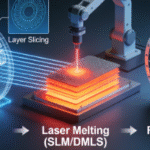How to find a cost-effective heating element
In school, we all learned that some materials are good conductors of electricity whereas others are bad. These bad conductors of electricity provide resistance to the flow of electricity. This resistance capacity of some materials is the basis of any heating element.
When electricity flows through a resistor it produces heat and it is not dependent only on the size of the material but also the amount of electricity that is passed. A thin piece of material can also be made really hot if you force enough electricity to pass through it. This is the basic idea behind an electric bulb where along with heat, light is also produced when you use the correct resistor.
Any typical heating element is made up of a coiled or strip of wire that produces heat when an electric current flows through it. When this heating element is used to heat up the air around it, it is called air heating elements whereas when it is used to heat up various chemicals, it is termed as chemical heating elements.
The heating element in both cases is made up of either nickel or iron or an alloy called nichrome that is 80 percent nickel and 20 percent chromium. Nichrome is used in most air heating elements as well as in most chemical heating elements as it has a high melting point, does not oxidize at high temperatures, and also does not expand much when heated. The optimal heat solution is decided by the end-use of the heating element and its operating temperature.
Air heating elements: usually are finned heaters which increase their surface area in the form of fins all along its surface. They can be small installations or part of a bespoke air heating system depending upon the customer’s demands. The tubular air heating elements are mostly made up of stainless steel or aluminum steel that increases the dissipation of heat.
Chemical heating elements are usually over the side immersion heaters which are dipped in the solution to be heated. This style of installation also allows for an easy replacement and cleaning during periodic inspections without the need to empty the system or tank. Some chemical heating elements are also made especially for alkaline products like cleaning solutions, mild acid baths, or citrus juices which can be corrosive to the normal stainless steel sheath.
For sulphuric acid solutions and chrome plating baths used mostly in the automotive industry, these chemical heating elements are covered with lead to prevent their deterioration due to the destructive chemicals. However, these lead-covered chemical heating elements are not recommended for any other process as lead is a poisonous substance.
Some chemical heating elements are made up of titanium and are generally used in the plating industry where they come in contact with nickel, chrome, silver, and gold. These titanium-plated chemical heating elements are also used for iron and other ferric chloride solutions, pickles that contain nitric, chromic and phosphoric acids, nitrates as well as processes that use dichromate and permanganate solutions.







